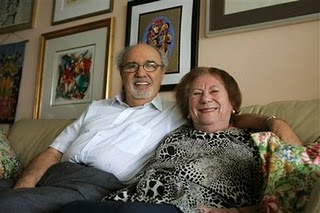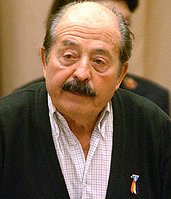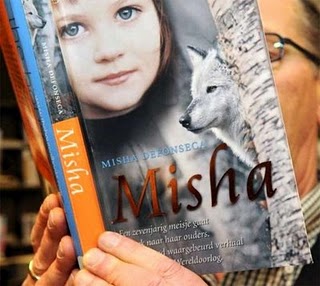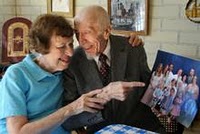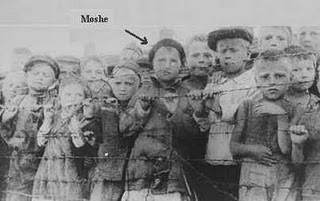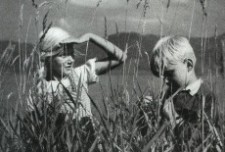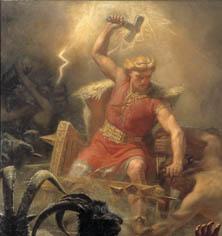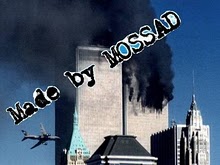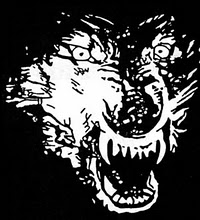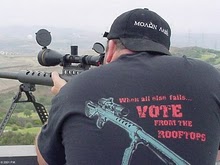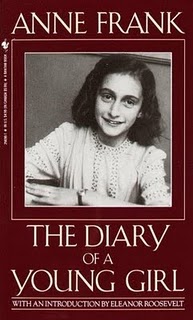
source: http://www.tbrnews.org/Archives/a2153.htm#002
The Anne Frank Diary Fraud
by Brian Harring
When Harriet Beecher Stowe wrote Uncle Tom's Cabin, she did so prompted by the highest of motives. Yet she, herself, relates the incident that when she first met Abraham Lincoln in 1863, he commented "So you are the little woman who wrote the book that made this great war!"
Few will deny that the printed word in this instance fanned the flames of passion which brought about one of the bloodiest and saddest wars of American history, with brother sometimes pitted against brother, father against son. Perhaps if there had been less appeal to the emotions the problems might have resolved themselves through peaceful means. However, almost universally read at the time, few people then recognized the potency of one small book or the injustice done the South through its wide acceptance as a fair picture of slavery in the South.
Propaganda, as a weapon of psychological warfare is in even wider use today. Communists were masters of the art. Often they used the direct approach; just as often they employed diversion tactics to focus the eyes and ears of the world in directions other than where the real conflict was being waged. For many years, through propaganda alone, the dead threat of Hitler and Nazism had been constantly held before the public in a diversion maneuver to keep attention from being directed against the live threat of Stalin, Khrushchev and Communism.
Such has been the effect, if not the deliberate intention of many who have promoted its distribution, of a book of popular appeal-The Diary Of Anne Frank. It has been sold to the public as the actual diary of a young Jewish girl who died in a Nazi concentration camp after two years of abuse and horror.
Many Americans have read the book or seen the movie version, and have been deeply moved by the real life drama it claims to present. But have we been misled in the belief that Anne Frank actually wrote this diary? And if so. should an author be permitted to produce a work of fiction and sell it to the world as fact, particularly one of such tremendous emotional appeal?
The Swedish journal Frio Ord published two articles commenting on The Diary of Anne Frank. A condensation of these articles appeared in the April 15, 1959 issue of Economic Council Letter, as follows:
“History has many examples of myths that live a longer and richer life than truth. and may become more effective than truth.
The Western world has for some years hem made aware of a young Jewish girl through the medium of what purports to he her personally written story, "Anne Frank's Diary." Any informed literary inspection of this book has shown it to have been impossible as the work of a teenager.
A noteworthy decision of the New York Supreme Court confirms this point of view, in that the well known American writer, Meyer Levin, has been awarded $50.000 lo he paid him by the father of Anne Frank as an honorarium for Levin's work on the "Anne Frank Diary."
Mr. Frank, in Switzerland, had promised to pay to prominent Jewish author, Meyer Levin. not less than $50,000 because he had used the literary creation of author Levin in toto, and represented it to his publisher and the public as his late daughter’s original work.
Inquiry of the County Clerk. New York County. as to the facts of the case referred to in the Swedish press, brought a reply on April 23, 1962, giving the name of a New York firm of lawyers as “attorneys .far the respondent.” Reference was to ”The Dairy of Anne Frank 2203-58.”
A letter to this firm brought a response on May 4, 1962 that “Although we represent Mr. Levin in other matters, we had nothing to do with the Anne Frank case.”
On May 7, 1962, came the following reply from a member of a firm of New York lawyers to whom the original inquiry had been forwarded:
“I was the attorney for Meyer Levin in his action against Otto Frank and others. It is true that a jury awarded Mr. Levin $50,000 in damages, as indicated in your letter. That award was later set aside by the trial justice. Hon. Samuel C. Coleman. on the ground that the damages had not been proved in the manner required by law. The action was subsequently settled between the litigating parties, while an appeal from Judge Coleman’s decision was pending.
I am afraid that the care itself is not officially reported, so far as the trial itself, or even Judge Coleman’s decision, is concerned. Certain procedural matters were reported. both in 141 New York Supplement. Second Series 170. and in 5 Second Series 181. The correct file number in the New York County Clerk‘s office is 2241-1956 and the file is probably a large and full one which must include Judge Coleman’s decision. Unfortunately, our file is in storage and 1 cannot locate a copy of that decision as it appeared in the New York Law Journal early in the year 1960.”
The Diary Of Anne Frank was first published in 1952 and immediately became a bestseller. It has been republished in paperback, 40 printings. It is impossible to estimate how many people have been touched and aroused by the movie production.
Why has the trial involving the father of Anne Frank, bearing directly on the authenticity of this book, never been "officially reported"? In royalties alone, Otto Frank has profited richly from the sale of this book, purporting to depict the tragic life of his daughter. But is it fact, or is it fiction? Is it truth or is it propaganda? Or is it a combination of all of these? And to what degree does it wrongfully appeal to the emotions through a misrepresentation as to its origin?
School publications for years have recommended this book for young people, presenting it as the work of Anne Frank. Advertising in advance of the movie showing has played up the “factual” nature of the drama being presented. Do not writers of such editorials and promoters of such advertising, “fan the flames of hate” they rightly profess to deplore?
Many American Jews were shocked at the handling of the Eichmann case, the distortions contained in the book Exodus and its movie counterpart, but their protests have had little publicity outside of their own organ, Issues, by the American Council for Judaism. Others who have expressed the same convictions have been charged with anti-Semitism. Yet it is to be noted that both Otto Frank and his accuser Meyer Levin, were Jewish, so a similar charge would hardly be applicable in pursuing this subject to an honest conclusion..
File number 2241-1956 in the New York County Clerk’s office should be opened to the public view and its content thoroughly publicized. Misrepresentation, exaggeration, and falsification has too often colored the judgment of good citizens. If Mr. Frank used the work of Meyer Levin to present to the world what we have been led to believe is the literary work of his daughter, wholly or in part, then the truth should be exposed.
To label fiction as fact is never justified nor should it be condoned.
Since actual period documentation does not exist in support of the Holocaust myth, it has always been incumbent on its supporters to create it.
Not only is the “Anne Frank” diary now considered to be a fake, so also is “The Painted Bird” by Jerzy Kosinski. This book, which is a mass of pornographic and sadistic imagery which, had it not been taken so seriously by the Jewish community, would be merely the pathetic manifestation of a self-serving and very sick person.
This was duly exposed as a shabby, though much revered (by the Jewish community) and quoted, fraud. When this was exposed, Kosinski committed suicide. Later, in Kosinski’s footsteps we find the next fiction entitled “Fragments, ” by a Swiss Protestant named Bruno Dosseker who spent the war in Switzerland as a young child. Dosseker posed as a very young Baltic Jewish concentration camp inmate named Binjamin Wilkomerski. This work consists of allegedly fragmented “memories” and is very difficult to read
Dosseker became the poster boy for the Holocaust supporters and was lionized by the international Jewish community, reaping considerable profit and many in-house awards for his wonderful and moving portrayal of German brutality and sexual sadism.
Another book, allegedly by a Hungarian doctor, concerning his deportation from Budapest in 1944 and subsequent journey by “Death Train” to Auschwitz is another fraud. There was never such a doctor in Hungary during the period involved and the alleged route of the train from Budapest to Auschwitz did not exist.
These sort of pathetic refugees from the back wards seem to be drawn to the Holocausters…and they to them. There are now “Holocaust Survivors” as young as thirty which is an interesting anomaly because the last concentration camp was closed in 1945. Perhaps they consider the last frenzied spring sale at Bloomingdale’s department store to be what they survived.
Next we can expect to see a book based on twenty-seven volumes of secret diaries prepared on a modern word processor within the current year by an alleged inhabitant of the Warsaw ghetto, describing the Nazi slaughter of tens of millions of weeping Jews by means that would shame a modern African state.
And, predictably, the publication of these howlers would be greeted with joy on the part of the fund raisers and fanatics, praised in the columns of the New York Times and scripted by Steven Spielberg for a heart-wrenching and guaranteed Oscar-winning film.
Hundreds of thousands of DVD copies will be donated to American schools and the Jewish community will demand that subservient executive and legislative bodies in America create a Day of Atonement as a National Holiday to balance the terrible Christian Christmas and the wickedly Satanic Halloween.
Conservationists must hate these books because so many otherwise beautiful and useful trees are slaughtered for their preparation
Insofar as the Anne Frank diary is concerned, herewith is some background on Anne Frank, her family and her alleged Diary.
The Franks were upper class German Jews, both coming from wealthy families. Otto and his siblings lived on the exclusive Meronstrasse in Frankfurt .Otto attended a private prep school, and also attended the Lessing Gymnasium, the most expensive school in Frankfurt.
Otto attended Heidelberg University. After graduation he left for a long vacation in England.
In 1909, the 20 year old Otto went to New York City where he stayed with his relatives, the Oppenheimers.
In 1925 Anne's parents married and settled in Frankfurt, Germany. Anne was born in 1929. The Frank's family business included banking, management of the springs at Bad Soden and the manufacture of cough drops. Anne's mother, the former Edith Holländer, was the daughter of a manufacturer.
In 1934, Otto and his family moved to Amsterdam where he bought a spice business, Opekta, which manufactures Pectin used in making household jellies.
On May 1940, after the Germans occupied Amsterdam Otto remained in that city while his mother and brother moved to Switzerland. Otto remained in Amsterdam where his firm did business with the German Wehrmacht. From 1939 to 1944, Otto sold Opeka, and Pectin, to the German army. Pectin was a food preservative, and a anti infectant balm for wounds and as a thickener for raising blood volume in blood transfusions. Pectin was used as an emulsifier for petroleum, gelatized gasoline for fire bombing. By supplying the Wehrmacht, Otto Frank became, in the eyes of the Dutch, a Nazi collaborator.
On July 6, 1942 Otto moved the Frank family into the so-called 'Secret Annex'. The annex is a three story, mostly glass townhouse that shares a garden park with fifty other apartments.
While he was allegedly in hiding, Otto Frank still managed his business, going downstairs to his office at night and on weekends. Anne and the others would go to Otto's office and listen to radio broadcasts from England.
The purported diary begins on June 12, 1942, and runs to December 5,1942 . It consists of a book that is six by four by a quarter inches . In addition to this first diary, Anne supplemented it with personal letters. Otto said Anne heard Gerrit Bolkestein in a broadcast say: ~ "Keep a diary, and he would publish after the war", and that's why Anne’s father claimed she rewrote her diaries second time in 1944.
In this second edition, the new writer changed, rearranged and occasionally combined entries of various dates.
When Anne allegedly rewrote the diaries, she used a ball point pen, which did not exist in 1945, and the book took on an extremely high literary standard, and read more like a professional documentary than a child's diary. In Anne's second edition her writing style, and handwriting, suddenly matured
The actual diary of Anne Frank contained only about 150 notes, according to The New York Times, of October 2 ,1955.
In 1944, German authorities in occupied Holland determined that Otto Frank had been swindling then via his extensive and very lucrative Wehrmacht contracts. The German police then raided his apartment attic, and the eight Jews were sent to Westerbork work camp and forced to perform manual labor .Otto himself was sent to Auschwitz.. Anne, her sister Margot, and her mother, subsequently died of typhus in another camp.
In 1945, after being liberated from German custody, Otto returned to Amsterdam, where he claimed he found Anne's diary cleverly hidden in the Annex's rafters. However, another version has a Dutch friend, Meip Geis finding Anne's diary of fictional events, which she then gave to Otto Frank.
Otto took what he claimed were Anne's letters and notes, edited them into a book, which he then gave to his secretary, Isa Cauvern, to review. Isa Cauvern and her husband Albert Cauvern , a writer, authored the first diary.
Questions were raised by some publishers as to whether Isa and Albert Cauvern, who assisted Otto in typing out the work used the original diaries or whether they took it directly from Mr. Frank's personal transcription.
American author, Meyer Levin wrote the third and final edition
Meyer Levin was an author, and journalist, who lived for many years in France, where he met Otto Frank around 1949.
Born in 1905, Meyer Levin was raised in the section of Chicago notoriously known in the days of gangster warfare as the "Bloody Nineteen Ward." At the age of eighteen he worked as a reporter for the Chicago Daily News and during the next four years became an increasingly frequent contributor to the national literary magazine, The Menorah Journal. In 1929 he published THE REPORTER, which was the first of his sixteen novels.
In 1933 Levin became an assistant editor and film critic at the newly-created Esquire Magazine where he remained until 1939
Perhaps his best-known work is COMPULSION (1956), chronicling the Leopold and Loeb case and hailed by critics as one of the greatest books of the decade. The compelling work was the first "documentary novel" or "non-fiction novel.”
After the enormous success of COMPULSION, Levin embarked on a trilogy of novels dealing with the Holocaust. The first, EVA (1959) was the story of a Jewish girl's experiences throughout the war and her adjustment to life after the concentration camps. This was followed by THE FANATIC (1963), which told the hypnotic story of a Jewish poet dealing with the moral questions that arose from his ordeal at the hands of the Nazis. The last in the triptych, THE STRONGHOLD (1965), is a thriller set in a concentration camp during the last days of the war.
At the outset of World War II Levin made documentary films for the US Office of War Information and later worked in France as a civilian expert in the Psychological Warfare Division. He eventually became a war correspondent for the Jewish Telegraphic Agency, with the special mission of uncovering the fate of Jewish concentration camp prisoners. Levin took his role very seriously, sometimes entering concentration camps ahead of the tanks of the liberating forces in order to compile lists of the survivors.
After the war Levin went to Palestine and turned his attention again to the motion picture camera. His film MY FATHER'S HOUSE told the story of a child survivor searching for his family in Palestine. He wrote this story as a novel as well and the book was published in 1947.
Levin also joined the Hagana underground and helped smuggle Jews from the interior of Poland to Palestine, then basically an Arab country under the control of the British..
In 1951 Levin came upon a copy of the French edition of the Anne Frank diary He made a number of attempts to have the work published in English, and conceived it as a play and film. When the diary finally found an American publisher, his play was accepted for production but then suddenly barred, ostensibly for being "unstageworthy," and another writer's version was commissioned.
Levin fought for the rights to perform his version of the play, claiming that the real reason the producers refused to stage his work was because they thought it "too Jewish." He saw the suppression of the play as an extension of the Stalinist attack on Jewish culture and, outraged that even Anne Frank could be censored, he took the producers to court and began an agonizing, prolonged struggle that dragged on for years.
Levin eventually won a jury award against the producers for appropriation of ideas, but the bitterness of the trial made him many enemies in the Jewish and literary communities.
Although Levin's version of the play is still banned by the owners of the dramatic rights, underground productions of the work are frequently staged throughout the world.
Meyer Levin died in 1981
Levin rewrote the various post-war treatments of the Anne Frank diary with an eye toward a Broadway production, but Otto decided to cut him out, refusing to honor his contract or pay him for his work. Meyer Levin sued Otto Frank for his writings, and the New York Supreme court awarded Meyer Levin $50,000, for his 'intellectual work'.
In 1980, Otto sued two Germans, Ernst Romer and Edgar Geiss, for distributing literature denouncing the diary as a forgery. The trial produced a study by official German handwriting experts that determined everything in the diary was written by the same person. The person that wrote the diaries had used a ballpoint pen throughout. Unfortunately for Herr Frank, the ballpoint pen was not available until 1951 whereas Anne was known to have died of typhus in 1944.
Because of the lawsuit in a German court, the German state forensic bureau, the Bundes Kriminal Amt [BKA] forensically examined the manuscript, which at that point in time consisted of three hardbound notebooks and 324 loose pages bound in a fourth notebook, with special forensic equipment.
The results of tests, performed at the BKA laboratories, showed that “significant” portions of the work, especially the fourth volume, were written with a ballpoint pen. Since ballpoint pens were not available before 1951, the BKA concluded those sections must have been added subsequently.
In the end, BKA clearly determined that none of the diary handwriting matched known examples of Anne's handwriting. The German magazine, Der Spiegel, published an account of this report alleging that (a) some editing postdated 1951; (b) an earlier expert had held that all the writing in the journal was by the same hand; and thus (c) the entire diary was a postwar fake.
The BKA information, at the urgent request of the Jewish community, was redacted at the time but later inadvertently released to researchers in the United States.
More Holohoax Tales
